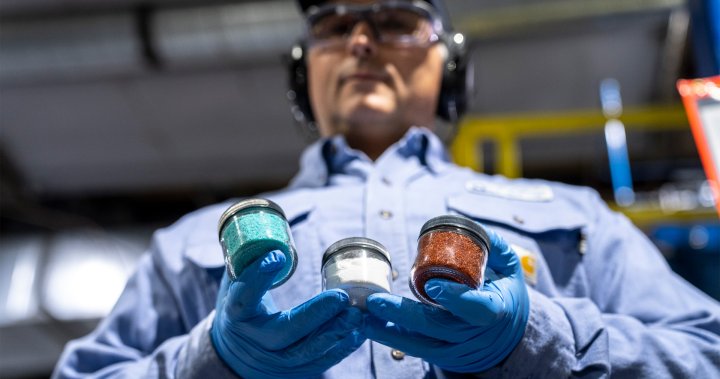Public Story
[Global News] How electric vehicles are sparking a battery recycling revolution
Summary
In Canada, U.S. and many European countries, it's estimated that only two per cent of lithium-ion batteries find their way to a recycling facility when they die. Instead, they sit forgotten in cupboards or drawers - or worse, end up in landfills.
Electric cars could change that. Their batteries are too big, too toxic and too valuable to simply throw away. The global EV revolution has given rise to a new recycling industry that hopes to capitalize on this future waste problem and help solve a looming minerals shortage.
Electric cars could change that. Their batteries are too big, too toxic and too valuable to simply throw away. The global EV revolution has given rise to a new recycling industry that hopes to capitalize on this future waste problem and help solve a looming minerals shortage.
Li-Cycle’s Kingston, Ont. facility doesn’t resemble a mine; there’s no hole in the ground or tailings. Instead, a handful of workers unpack skids of old or defective electric vehicle battery modules, carefully lifting them onto a conveyor belt. Then, one by one, they are dropped into a chemical solution before being shredded.
This stage of the recycling process breaks down the batteries into three distinct components: plastics, metals, and black mass. The latter is Li-Cycle’s bread and butter, and the end products are battery-grade materials ready to be sold back to battery manufacturers.
This new technology is being perfected by a cluster of Canadian battery recyclers, all vying for their slice of the global market. The first wave of end-of-life EV batteries is expected to come in 2030, when an estimated 1.7 million tonnes of battery waste will need to be disposed of.
And that’s just the beginning.
To read more, visit Global News.
 How electric vehicles are sparking a battery recycling revolution - National | Globalnews.ca
How electric vehicles are sparking a battery recycling revolution - National | Globalnews.caA new generation of Canadian recyclers have sprung up to make sure used EV batteries — and the precious minerals inside — don’t go to waste.
Globalnews.ca
![[Global News] How electric vehicles are sparking a battery recycling revolution by Katherine Cheng](/v2-images/v_noframe.500.png)






![[Global News] How electric vehicles are sparking a battery recycling revolution by Katherine Cheng](/v2-images/sharer-fb.jpg)
![[Global News] How electric vehicles are sparking a battery recycling revolution by Katherine Cheng](/v2-images/sharer-tw.jpg)